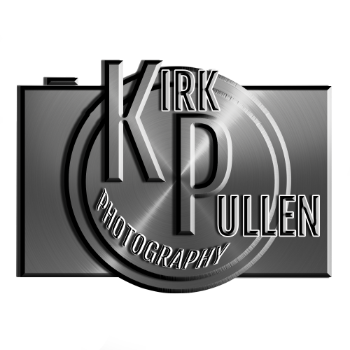Studio Headshots
Friday, June 03, 2022 | By: Kirk Pullen Photography
I recently worked with Rusty Williams in my studio, to capture headshots for his insurance business. He told me that he needed headshots of himself and his employees for his website. I've known Rusty for a long time and have photographed him and his family many times. I asked him what color background that he preferred and he chose blue.
I used three lights for the headshots. A main light to light their faces, a kicker light and a hair light.
I kept the main light fairly close for the headshots in combination with a reflector to bounce light back into their faces in order to softly fill in the shadows. The closer the main light is to the subject, the softer the light is. I had a medium size soft box on the main light so that the light quality would be somewhat soft. The word soft box might sound confusing to someone who isn't a photographer. If you think of a soft box as an umbrella that has an enclosed bottom. I use a 36 inch soft box for my Flashpoint studio strobes. The larger the light source, the softer the light becomes. However, larger light sources are more difficult to work with in a studio. I used a light stand with a boom arm. The boom arm keeps the light stand from being in the shot. I angled the main light so that it lights one side of the face and nose, while the other side of face has a gradient look going into shadow. I used a 4 foot silver reflector underneath the main light and it was held in place by a reflector stand.
The kicker light was to camera left and I used a grid on a 4 foot strip soft box. The word kicker might be unfamiliar to someone who isn't a photographer, so I'll explain it. It's a light similar to the main light. The only difference is the position of the light. This light comes from behind the subject to separate them from the back ground. In case you aren't familiar with what a grid is, I'll explain it. It's a way to control light so it only goes in one direction. It's made of velcro and fabric that is about 2 inches thick. You just attach it to the light source and it keeps unwanted light from going into the camera lens and sensor. If unwanted light gets on the lens or sensor the colors and shot can look faded and not vibrant. Controlling light is essential in a studio setting.
My third and final light source was a hair light. The hair light is attached to an arm on the ceiling of my studio, to light up hair. Because of the angle that the hair light is aimed, I don't have to worry about light going into the camera, so I don't use any light modifiers with it.
I did not use a light on the blue background because I knew I wanted a really dark blue color. My goal for the head shots was to create contrast by having a deep rich blue background with the clients face being the brightest part of the image. That brightness draws attention to the viewers eye, when they look at the image. Rusty was pleased with the images and ended up purchasing several digital files for his website.






Leave a comment
0 Comments